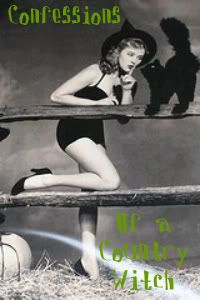Here's an interesting article I found, and it definatly holds some truth to it.
By Melissa Breyer, Senior Editor
When my kids were toddlers, one of my old-time Brooklyn neighbors said that we all need to eat a pound of dirt during our lives, which sounded somehow right to me. After all, I was an avid grubber in my childhood backyard and gave my older sisters no end of disgusted delight when I would eat dirt-crumbed slugs. (I can only think I was channeling my French ancestors.) I’m sure I got my full pound of dirt in before the age of 3.
In the circle of moms I know, there are two types. There are the ones with the quick-draw, holstered hand-sanitizer and a zero-second rule for fallen snacks; and then there are the ones who with the two-second rule, or sometimes the three- or four-second rule, or heck, if no one’s looking, who cares how long the snack was on the floor–go ahead and eat it. It somehow feels wrong to let a kid pick something up off the ground and eat it, but why is it that so many kids instinctively put things in their mouths? Not just dropped crackers, but dirty twigs, germy toys, and slugs too! What could be the evolutionary advantage behind this instinct?
Well, in an article in The New York Times this week, reporter Jane E. Brody writes about the “hygiene hypothesis,” in which researchers are concluding that “the millions of bacteria, viruses and especially worms that enter the body along with ‘dirt’ spur the development of a healthy immune system.”
Mary Ruebush, a microbiology and immunology instructor, and author of the book, “Why Dirt Is Good” (Kaplan), says that when kids put things in their mouths, “Not only does it allow for “practice” of immune responses, which will be necessary for protection, but it also plays a critical role in teaching the immature immune response what is best ignored.” She deplores the current fetish for the hundreds of antibacterial products that convey a false sense of security and may actually foster the development of antibiotic-resistant, disease-causing bacteria. Plain soap and water are all that are needed to become clean. “I certainly recommend washing your hands after using the bathroom, before eating, after changing a diaper, before and after handling food, and whenever they’re visibly soiled,” she wrote. When no running water is available and cleaning hands is essential, she suggests an alcohol-based hand sanitizer.
It seems to me there has been such a wide swing of the spectrum–from the disease-thriving filth and squalor of centuries past to the obsession with cleanliness and hardcore hygiene that we see in industrialized countries today. Given the plagues and epidemics of our past it makes sense that we strive for sterile environments, but it looks possible that we’re swinging too far. Part of me wonders how much of that is due to marketing. In 2008, Americans spent over $5 billion on household cleaning products–imagine how much of that money went right back into advertising departments to dream and scheme new ways to subtly scare people into really needing those germ-slaughtering scrubbing bubbles and disinfecting sprays and wipes. Not to mention anti-bacterial soaps and other triclosan products.
As far as I can tell, the solution seems to be, as is so often the case, moderation and common sense. Wash your hands with plain soap and hot water, don’t let your kids eat things that seem blatantly dangerous (slugs: OK–but stay away from anything that has had contact with pesticides or chemicals), and start working on that pound of dirt.
Jo.



































